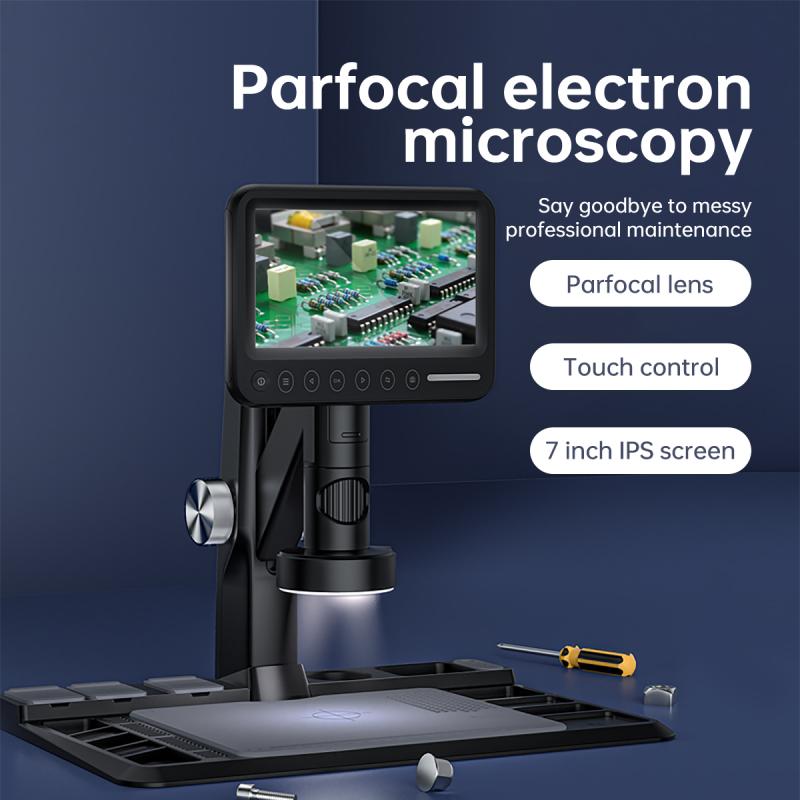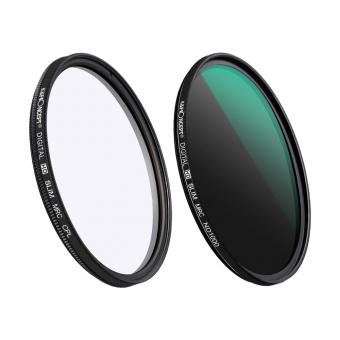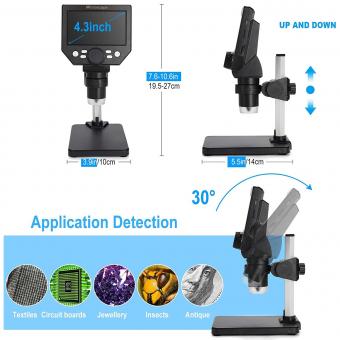What Can You See At 2500x Magnification ?
At 2500x magnification, you can see highly detailed views of microscopic objects such as cells, bacteria, and other small organisms. This level of magnification allows for the observation of intricate structures and fine details that are not visible to the naked eye. It can also reveal the texture and composition of materials at a microscopic level, making it useful in various scientific and research fields.
1、 Cellular Structures and Organelles
At 2500x magnification, one can observe a plethora of cellular structures and organelles that are otherwise invisible to the naked eye. This level of magnification allows for a detailed examination of the intricate components that make up a cell, providing valuable insights into its structure and function.
One of the most prominent structures that can be observed at this magnification is the nucleus. The nucleus, often referred to as the "control center" of the cell, contains the cell's genetic material, DNA. At 2500x magnification, the nucleus appears as a distinct, round structure with a densely packed chromatin network. Additionally, one can observe the nucleolus, a substructure within the nucleus responsible for the production of ribosomes.
Another organelle that becomes visible at this level of magnification is the mitochondrion. Mitochondria are known as the "powerhouses" of the cell, as they generate energy in the form of ATP through cellular respiration. At 2500x magnification, mitochondria appear as elongated structures with a double membrane and a highly folded inner membrane called cristae.
Other organelles that can be observed include the endoplasmic reticulum (ER), Golgi apparatus, and lysosomes. The ER is a network of membranous tubules and sacs involved in protein synthesis and lipid metabolism. The Golgi apparatus, often referred to as the "post office" of the cell, is responsible for modifying, sorting, and packaging proteins for transport. Lysosomes, which contain digestive enzymes, can also be observed at this magnification.
It is important to note that advancements in microscopy techniques and technology continue to enhance our understanding of cellular structures and organelles. Newer techniques, such as super-resolution microscopy, have pushed the limits of magnification even further, allowing for the visualization of smaller structures and finer details within cells.

2、 Microorganisms and Bacteria
At a magnification of 2500x, one can observe a fascinating world of microorganisms and bacteria. This level of magnification allows for a detailed examination of these tiny organisms, revealing their intricate structures and behaviors.
Microorganisms, such as protozoa and algae, become visible at this magnification. Protozoa are single-celled organisms that exhibit various shapes and structures, including cilia or flagella for movement. Algae, on the other hand, are photosynthetic organisms that can be observed in different forms, ranging from unicellular to multicellular structures.
Bacteria, which are among the most abundant and diverse organisms on Earth, can also be seen at this level of magnification. They appear as small, rod-shaped or spherical cells, often forming colonies or chains. Bacteria play crucial roles in various ecosystems, including nutrient cycling and decomposition.
It is important to note that the field of microbiology is constantly evolving, and new discoveries are being made regularly. With advancements in microscopy techniques and technology, scientists are now able to observe microorganisms and bacteria at even higher magnifications, revealing previously unseen details. For instance, the use of electron microscopy has allowed for the visualization of the internal structures of these organisms, providing deeper insights into their functions and interactions.
In conclusion, at a magnification of 2500x, one can observe a diverse array of microorganisms and bacteria. These organisms, which are often invisible to the naked eye, reveal their intricate structures and behaviors when viewed under such high magnification. The ongoing advancements in microscopy techniques continue to expand our understanding of these fascinating microscopic worlds.

3、 Tissue and Cell Morphology
At 2500x magnification, one can observe intricate details of tissue and cell morphology. This level of magnification allows for a closer examination of cellular structures, providing valuable insights into their composition and organization.
When observing tissue at this magnification, one can discern the arrangement and characteristics of different cell types within the tissue. For example, in epithelial tissue, the individual cells can be seen tightly packed together, forming layers or sheets. The presence of specialized structures such as cilia or microvilli on the cell surface can also be observed, aiding in the understanding of their functions.
In addition to tissue organization, 2500x magnification enables the visualization of cellular structures and organelles. The nucleus, mitochondria, endoplasmic reticulum, Golgi apparatus, and other organelles become clearly visible, allowing for the study of their morphology and distribution within the cell. This level of magnification also facilitates the identification of cellular components such as cytoskeletal elements, vesicles, and lipid droplets.
Furthermore, advancements in imaging techniques and staining methods have enhanced the visualization of specific cellular components and molecular interactions. Fluorescent labeling and immunohistochemistry techniques can be employed to highlight specific proteins or molecules of interest within the cells, providing a more detailed understanding of their localization and function.
It is important to note that the specific details observed at 2500x magnification may vary depending on the sample preparation techniques, staining methods, and the type of microscope used. However, with the advancements in microscopy technology, researchers can now explore cellular and tissue morphology with unprecedented clarity and detail, contributing to our understanding of various biological processes and diseases.

4、 Nanoparticles and Nanomaterials
At 2500x magnification, one can observe a wide range of nanoparticles and nanomaterials. Nanoparticles are particles that have dimensions in the nanometer range, typically between 1 and 100 nanometers. They can be made from various materials such as metals, metal oxides, polymers, and carbon-based materials.
At this level of magnification, one can see the intricate structures and surface features of nanoparticles. For example, metallic nanoparticles such as gold or silver appear as tiny spheres or rods with distinct shapes and sizes. The surface of these particles may also exhibit unique patterns or textures, which can be crucial for their applications in fields like catalysis, electronics, and medicine.
Nanomaterials, on the other hand, refer to materials that possess nanoscale dimensions in at least one direction. These materials can be engineered to have specific properties and functionalities. At 2500x magnification, one can observe the arrangement and organization of nanomaterials, such as nanotubes, nanowires, or nanosheets. These structures can have a significant impact on the material's properties, such as electrical conductivity, mechanical strength, or optical behavior.
Furthermore, at this level of magnification, one can also study the interactions between nanoparticles and nanomaterials. For instance, the attachment of nanoparticles onto a nanomaterial's surface or the formation of nanoparticle clusters can be observed. These interactions play a crucial role in determining the overall behavior and performance of nanocomposites.
It is important to note that the field of nanotechnology is rapidly evolving, and new advancements are constantly being made. Therefore, the latest point of view regarding what can be seen at 2500x magnification may include emerging nanomaterials, such as two-dimensional materials like graphene or transition metal dichalcogenides. These materials possess unique properties and offer exciting possibilities for various applications, including electronics, energy storage, and sensing.








































